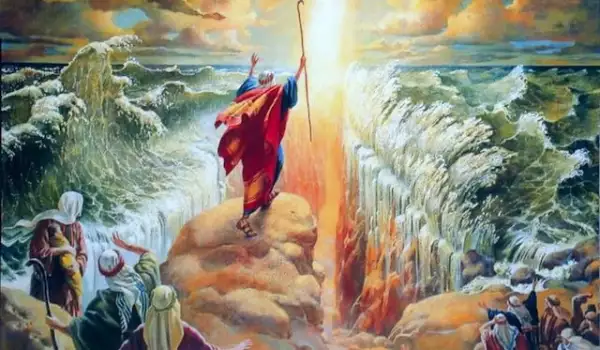One of the most popular stories in the Bible is that of Moses, who parted the Red Sea so that the Jews could cross along the bottom and reach the far shore. Then the waters returned and killed the pursuing soldiers of the pharaoh.
But this inspiring miracle story in the name of justice is questioned by Dr. Bruce Parker - former lead scientist of the National Oceanic and Atmospheric Administration in the US.
After several years of study of the ancient texts, Dr. Parker is convinced that Moses was not waiting for a miracle but that he simply knew high and low tides. For years, the interpretation of the magical parting of the sea aroused the suspicion of many but no actual counterarguments and facts had been put forth.
According to Dr. Bruce Parker, Moses was exceptionally knowledgeable for his time and took the tides and influence of the Moon into account so that he could lead his people through the Red Sea without any problems.
Currently, Ridley Scott's new movie Exodus: Gods and Kings gives one realistic view of events. It aims to portray a more realistic version by explaining the parting of the seas with a tsunami caused by an earthquake.
But even this theory seems highly unlikely to Dr. Parker. He explains that during a tsunami, the waters can only pull back for 20 min. This is a significantly short amount of time for the people of Israel to cross. Plus, there was no way for Moses to have predicted that there would be an earthquake.

Dr. Parker believes that Moses most likely knew how the waters behaved during a low tide and assured his people safe passage. In addition he was able to predict when exactly the pharaoh's army would arrive based on the cloud of dust rising from the chariots and horses.
It is postulated that the crossing of the sea took place at the Gulf of Suez, at the northern end of the Red Sea. Even today, parts of the sea bottom there remain dry for hours during low tide, then the water abruptly returns - the same way it is described in the Bible. Additionally, the ancient writing shows that the dramatic exodus occurred during a full moon. That is precisely when the low tide and high tide are strongest.
Of course, Dr. Parker is not the first to propose this theory about the miracle of Moses. In the 1st century BC, the ancient historian Antapanus wrote: Knowing the land, Moses waited for low tide and led his people across the sea when the bottom was dry.












